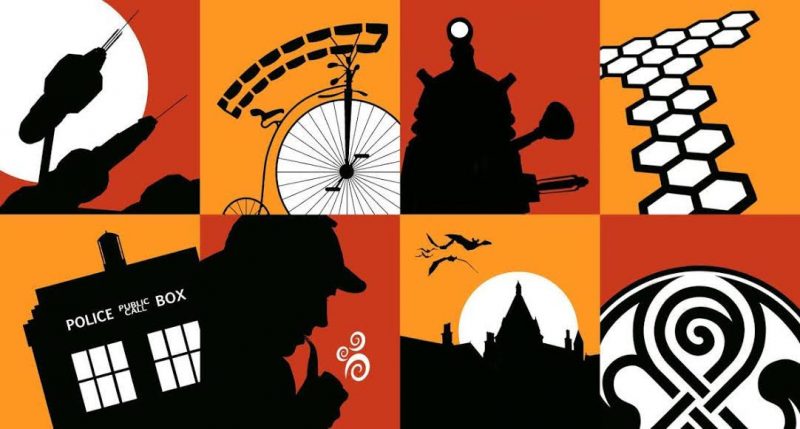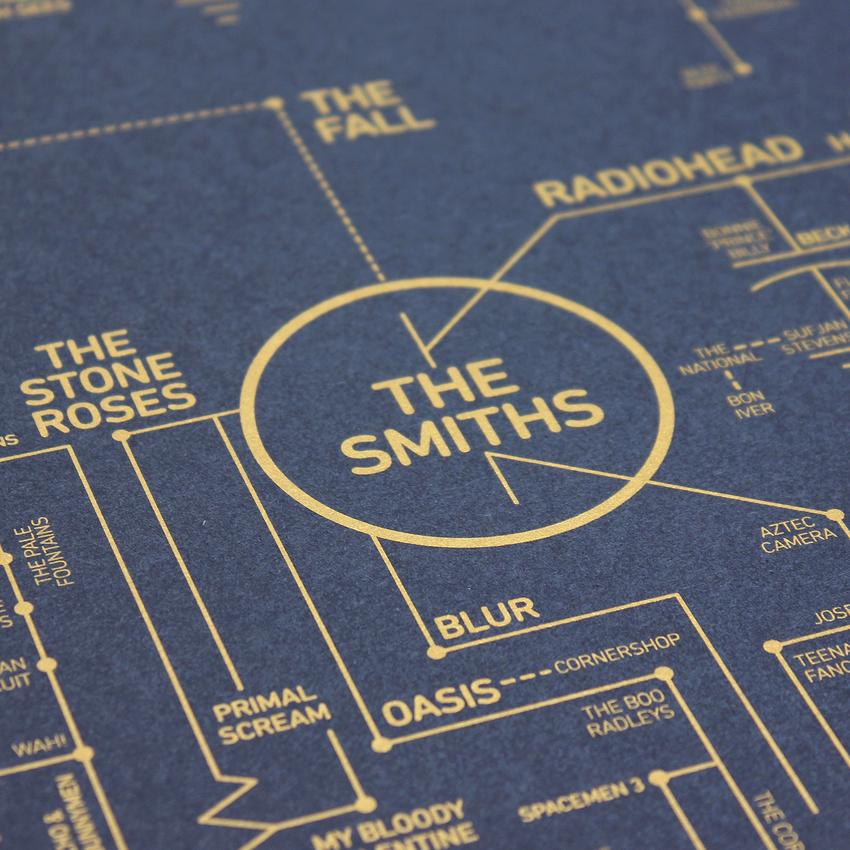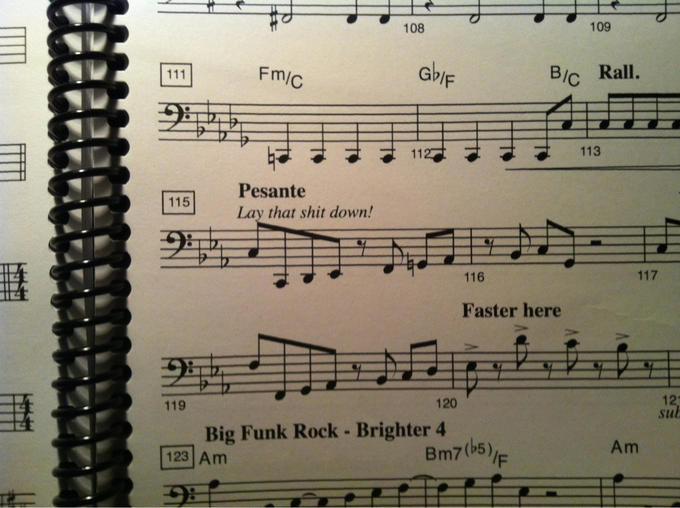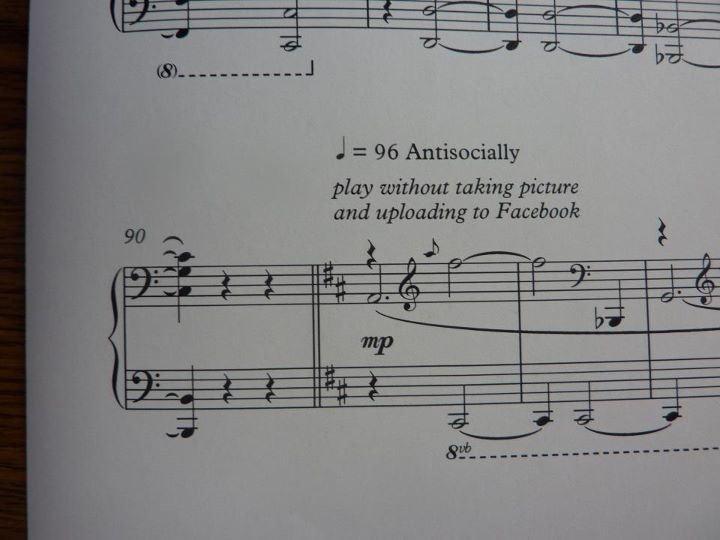
“Yes, this should provide adequate sustenance for the Doctor Who marathon,” once said The Simpsons’ Comic Book Guy while pushing a wheelbarrow full of fast-food tacos down the street. As the embodiment of fandom for all things fantasy and sci-fi, he would certainly know that Doctor Who, no longer an obscure BBC television show but an ever-expanding fictional universe with a global fan base, constitutes the ideal material for binge-watching, which he could now do at his convenience on a service like Britbox. But it isn’t just watching: now, on Spotify (whose free software you can download here if you don’t have it already), you can binge-listen to thirty straight hours of Doctor Who audio dramas as well.
“An icon of modern British culture and the longest-running science-fiction TV show in history, Doctor Who has never been more popular than it is today,” wrote Christopher Bahn in the AV Club’s 2010 primer on the series, which had relaunched five years earlier after initially running from 1963 to 1989. “No matter who’s playing the lead, the basic premise has been essentially the same since the show’s debut: A mysterious, eccentric alien known only as The Doctor (not ‘Doctor Who,’ in spite of the title) travels through time and space having adventures and fighting evil. He’s usually accompanied by one or two humans picked up along the way. They journey with him in a time machine called a TARDIS, which looks like a blue phone booth.”
This format “allowed the show to literally go anywhere in the universe and sometimes outside it, with virtually limitless storytelling possibilities.” At its best, “Doctor Who relied on solid, imaginative scripts to create smart science-fiction thrillers with a humanistic, anti-authoritarian heart. Consistently popular through the 1960s and 1970s, the show began to falter in the following decade as tight budgets and questionable artistic choices took their toll.” After its cancellation in 1989, Doctor Who “lived on through the ’90s, as science-fiction shows often do, in the wilderness genres of semi-official novels and radio plays.”
The best known of these Doctor Who radio plays, which you can hear on this playlist, come produced by a company called Big Finish. Having acquired a license from the BBC in 1999 (and recently renewed it into 2025), they’ve put out a range of audio dramas, both one-offs and series of various lengths, using not just the characters but many of the actual actors from the television show, including six of those who have taken on the iconic Doctor role onscreen. Owing to the fact that Doctor Who officially has no canon and thus no need for continuity, rigorous or otherwise, they can get even more imaginative than their source material, going so far as to explore counterfactual storylines such as one where the Doctor never leaves his home planet in the first place.
Below you’ll find a complete list, assembled by a fan on Reddit, of the series and episodes of Big Finish’s Doctor Who audio dramas now available on Spotify and are now housed to our collection of Free Audio Books. The material comes to thirty hours in total, but the question of when to listen to it falls second to a more important consideration: what sort of sustenance will best ensure that you can keep up with all of the Doctor’s audio adventures?
Main Range:
- The Sirens of Time
- Phantasmagoria
- Whispers of Terror
- The Land of the Dead
- The Fearmonger
- The Marian Conspiracy
- The Genocide Machine
- Red Dawn
- The Spectre of Lanyon Moor
- Winter for the Adept
- The Apocalypse Element
- The Fires of Vulcan
- The Shadow of the Scourge
- The Holy Terror
- The Mutant Phase
- Storm Warning
- Sword of Orion
- The Stones of Venice
- Minuet in Hell
- Loups-Garoux
- Dust Breeding
- Bloodtide
- Project: Twilight
- The Eye of the Scorpion
- Colditz
- Primeval
- The One Doctor
- Invaders from Mars
- The Chimes of Midnight
- Seasons of Fear
- Embrace the Darkness
- The Time of the Daleks
- Neverland
- Spare Parts
- …ish
- The Rapture
- The Sandman
- The Church and the Crown
- Bang-Bang-a-Boom!
- Jubilee
- Nekromanteia
- The Dark Flame
- Doctor Who and the Pirates
- Creatures of Beauty
- Project: Lazarus
- Flip-Flop
- Omega
- Davros
- Master
- Zagreus
Special Releases:
Fourth Doctor Adventures:
1.02 The Renaissance Man
Eighth Doctor Adventures:
1.1 Blood of the Daleks, Part 1
1.2 Blood of the Daleks, Part 2
1.5 Phobos
1.6 No More Lies
The Lost Stories:
1.01 The Nightmare Fair
1.02 Mission to Magnus
1.03 Leviathan
1.04 The Hollows of Time
1.05 Paradise 5
1.06 Point of Entry
1.08 The Macros
Box 1. The Fourth Doctor Box Set
The Companion Chronicles:
2.1 Mother Russia
2.2 Helicon Prime
2.3 Old Soldiers
2.4 The Catalyst
Destiny of the Doctor:
- Hunters of Earth
- Shadow of Death
- Vengeance of the Stones
- Babblesphere
- Smoke and Mirrors
- Trouble in Paradise
- Shockwave
- Enemy Aliens
- Night of the Whisper
- Death’s Deal
- The Time Machine
Short Trips:
The Stageplays:
Bernice Summerfield:
Box 2. Road Trip
Box 3. Legion
Box 4. New Frontiers
Box 5. Missing Persons
Graceless:
Dalek Empire:
- Invasion of the Daleks
- The Human Factor
- “Death to the Daleks!”
- Project Infinity
- Dalek War: Chapter One
- Dalek War: Chapter Two
- Dalek War: Chapter Three
- Dalek War: Chapter Four
Jago & Litefoot:
Counter-Measures:
Iris Wildthyme:
2.3 The Two Irises
UNIT:
I, Davros:
Cyberman:
1.1 Scorpius
1.2 Fear
1.3 Conversion
1.4 Telos
2.0 Cyberman 2
Charlotte Pollard:
Related Content:
BritBox Now Streaming Now Streaming 550 Episodes of Doctor Who and Many Other British TV Shows
The Fascinating Story of How Delia Derbyshire Created the Original Doctor Who Theme
Based in Seoul, Colin Marshall writes and broadcasts on cities and culture. He’s at work on a book about Los Angeles, A Los Angeles Primer, the video series The City in Cinema, the crowdfunded journalism project Where Is the City of the Future?, and the Los Angeles Review of Books’ Korea Blog. Follow him on Twitter at @colinmarshall or on Facebook.







